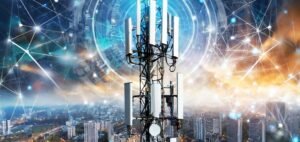Citizen-Centric Design
With rapid urbanization, the future of smart city in 2025 is changing with accelerating speed due to technological changes, needs for sustainability, and needs of better living standards. The future of smart city in 2025 will redefine the urban life through rationalized innovations in artificial intelligence (AI), Internet of Things (IoT), green energy, and digital governance. In this regard, the article illustrates the changing paradigm of smart city and how the innovations are driving the future.
The Pillars of Smart Cities
Smart cities combine digital technologies to make urban areas productive, sustainable, and human-centered places. The main pillars are:
- Connectivity and Data Integration: IoT sensors, 5G networks, and cloud computing enable real-time data collection and analysis to aid city functions such as traffic management, energy delivery, and public safety.
- Sustainability: Climatic change and scarcity of resources are tackled in smart city planning. Renewable energy-based system, green urban planning, and proper waste management are its pillars.
- Citizen-Centric Services: e-governance, healthcare, education, and citizens’ participation are provided by digital means, hence being more inclusive and improving the quality of life.
Key Trends which will Shape the Smart City of 2025
- AI in Urban Planning
AI is revolutionizing city management by optimizing resource utilization, predictive infrastructure development, and instant citizen warnings. AI-based systems sift through huge amounts of data to enhance traffic movement, optimize energy consumption, and predict maintenance.
- Smart Mobility
Smart mobility in smart cities is being revolutionized by autonomous vehicles, car-sharing systems, and smart traffic control systems. They minimize congestion and emissions and deliver access—drivers of smart cities of tomorrow.
- Green Energy Infrastructure
Artificial intelligence-based smart grids make energy efficiency optimal by integrating renewable energy sources such as solar energy and wind energy with advanced battery storage facilities. Micro-grids provide security even in case of disruption, setting the stage for smart green cities of the future.
- Digital Citizenship
Digital identity platforms facilitate access to government services including permits, welfare schemes, and tax payments. The platforms also facilitate civic engagement and data protection and security concerns—cornerstones of the smart city future.
- Smart Water Management
Since water scarcity is likely to impact billions of individuals by 2050, smart cities utilize IoT-based systems for real-time monitoring of water consumption, recycling plants, and desalination plants to enable sustainable water management—a future smart city priority.
- City-Scale Digital Twins
Digital twins, or virtual duplicates of real environments, are becoming more widely utilized as planning tools for city growth. They are utilized in such cities as Singapore to simulate disaster readiness preparedness, infrastructure development, and environmental studies that will map out the long-term future of the smart city of tomorrow.
- Climate Resilience
Smart cities are implementing technologies to mitigate climate threats. Some of the examples include IoT-based flood early warning systems in New York’s FloodNet project and multilateral public spaces in Rotterdam as flood plains during the rains—testaments to futurist actions towards a smart city’s greener tomorrow.
The Role of Technology in Citizen Well-being
Health-Centric Urban Design
Smart cities make use of technology to enhance physical and mental wellbeing. Sensors pick up air and noise pollution and healthier city design through predictive analytics that benefit the future of smart cities.
Public Safety
Security is enhanced through the use of blockchain technology through the model of the use of tamper-proof proof for law enforcement. IoT systems such as gunshot detection systems enhance the response times to emergency—life-saving elements in the maintenance of safety within the future smart city environment.
Challenges Ahead
Smart cities, promising much as they do, are challenged by an entire gamut of them:
- Data Privacy: IoT device reliance is triggering paranoia about being watched as well as data misuses.
- Cybersecurity: While digitizing city infrastructure, effective security mechanisms need to be implemented to guard it against cyberattacks.
- Economic Inequality: Providing minimum access to smart city provisions is still our ultimate concern while moving toward the promising arena of smart cities.
Conclusion
Smart city futures converge with technology, sustainability, and human-centered design. Through the adoption of innovation like AI-governance, renewable energy networks, and digital citizenship platforms, cities can respond to the challenges of urbanization and enhance the quality of life for residents. This is, however, dependent on intergovernmental, private sector, and community collaboration for the innovations to be inclusive and resilient.
As we embark on this new era of city life, the future of smart cities will not only transform how we engage with the world around us, but also how we imagine the possibilities of human development altogether. To remain committed to this vision will be crucial as we go about designing smarter city spaces for all.





